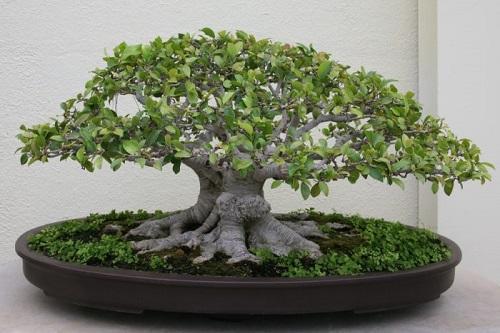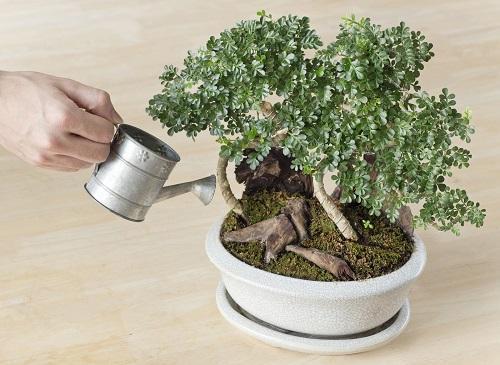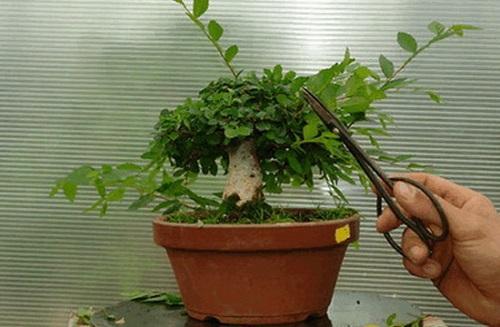Bonsai: features of caring for a tree at home
 A miniature garden in the house is not a fiction, but a real reality. Thanks to Chinese gardeners, now no one will be surprised by a small tree made of ficus, azalea or juniper standing on a windowsill or on a curbstone. Such plants differ from their relatives only in their small size, and even in their shape, which can be very diverse, from straight to bizarrely curved.
A miniature garden in the house is not a fiction, but a real reality. Thanks to Chinese gardeners, now no one will be surprised by a small tree made of ficus, azalea or juniper standing on a windowsill or on a curbstone. Such plants differ from their relatives only in their small size, and even in their shape, which can be very diverse, from straight to bizarrely curved.
It is not very difficult to grow a bonsai at home, but still there are a number of features on which the general condition and appearance of the plant depends. First of all, this concerns care, because it is slightly different from the events held for ordinary indoor flowers.
So how do you care for bonsaiso that the composition looks beautiful, and the tree itself grows actively, despite the limited space? Among the highlights are:
- lighting and temperature requirements;
- watering mode;
- feeding mode;
- crown formation;
- the nuances of the transplant.
Where to put bonsai?
The bonsai should be on a well-lit side of the room. In a dark room you will need additional lighting, otherwise the plant will develop slowly and lose its rich color.
Some crops (for example, deciduous trees) during the dormant period can be kept in partial shade.
As for the temperature regime, it depends on the specific type of plant, but on average it is 18-20 degrees Celsius. Tropical species need a higher temperature (up to 25 degrees).
In the summer, bonsai of all types are recommended to be taken outdoors, but not in direct sunlight.
How often to water and feed?

Since bonsai grows in small containers, it requires special attention from the side of watering, because in flat wide flowerpots, the soil dries out faster. Therefore, it is important to water the bonsai on time, especially when you are outdoors in summer. At this time, watering should be daily, and in winter, once a week is enough.
In addition to moistening the soil, the tree must be regularly sprayed, avoiding water getting on the flowers.
Bonsai can be fed in the spring by applying once a month special fertilizers in the form of balls, which are intended for mini-trees. Ready-made organic and mineral preparations are also suitable, provided they are used separately no more than once a week.
In the middle of summer, it is recommended to stop feeding for a month, so that the young branches become lignified faster.
How and when to trim?

The formation of the crown should be started in winter, cutting out all the ugly and diseased branches for this. Thus, you can give the bonsai any desired shape, and to stimulate branching, you need to pinch the upper buds of all shoots.
Spend pruning bonsai can be done no more than once every two months.
How to transplant?

A month after the first (winter) pruning, the bonsai should be transplanted annually into a more spacious bowl with soil replacement. In this case, you should pay attention to the size of the root system. It should not exceed the size of the crown of the tree itself, so all excess roots must be cut off.